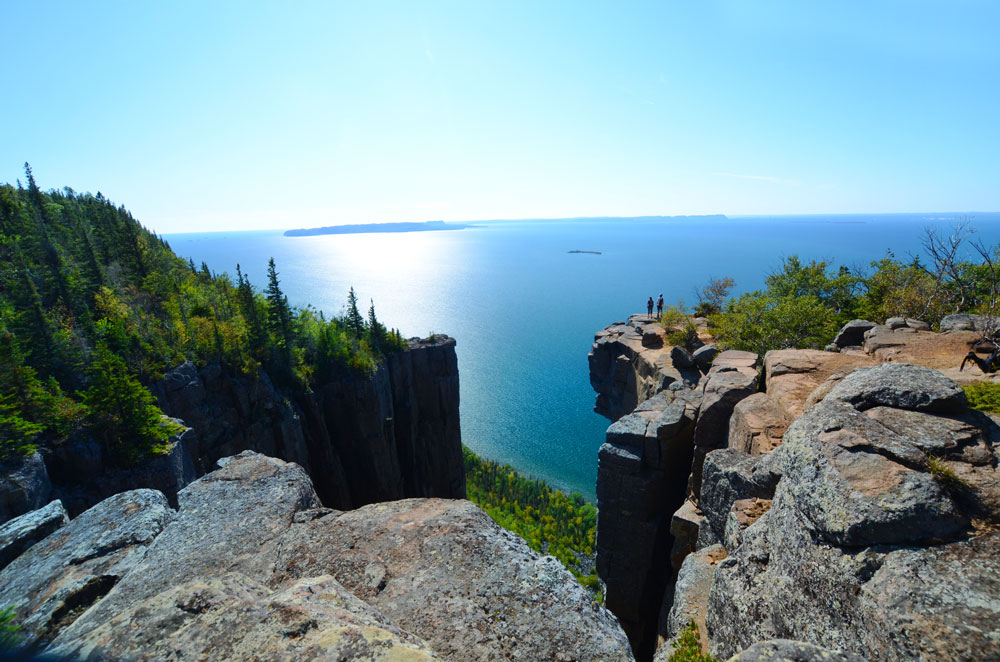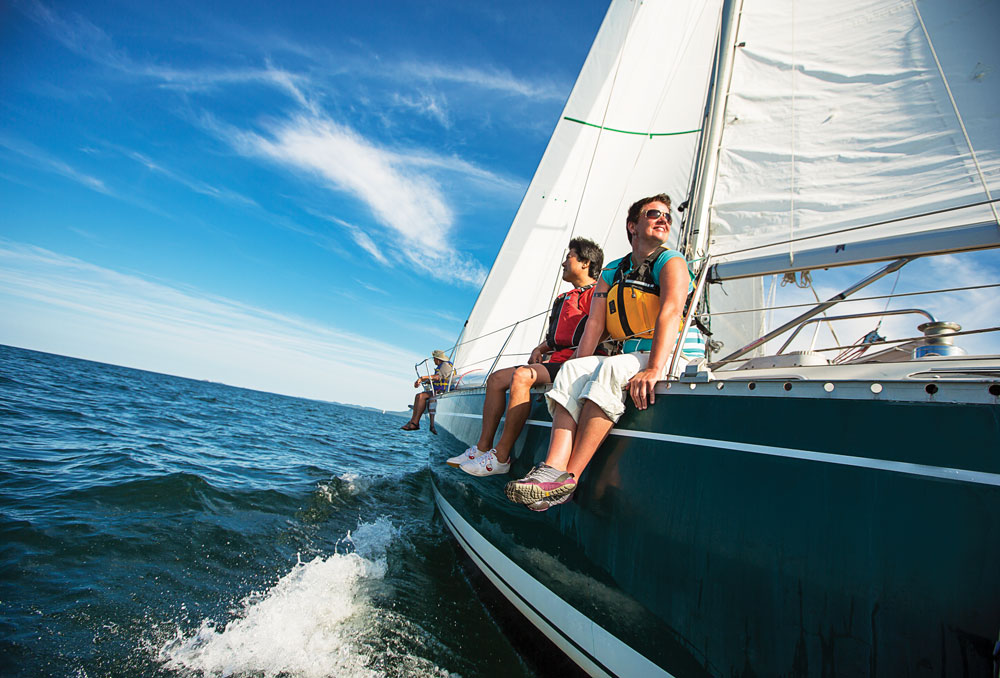With high marks in livability and business growth, the Great Lakes have much to offer those seeking an excellent way of living. Scenic lakeside views and boundless options for nature and outdoor recreation are just some of the hallmarks for this region boosted by its freshwater resources and well-positioned geography. With a population of over 120,000 and a scenic coastal city that offers community, a vibrant art and music scene and family friendly activities, Thunder Bay, the “sunniest city” in eastern Canada, sets a high bar of living for its residents.
Sun and Fun in Thunder Bay
In northwestern Ontario, Thunder Bay sits on Lake Superior and receives over 2,000 hours of bright sun annually. This solar boon lends itself to an immense outdoor recreation scene in Thunder Bay, served by Sleeping Giant Provincial Park and other national parks. Sleeping Giant, distinguished by its steep cliffsides, mesas and boreal forest, has gorgeous views of Lake Superior, geological features like Tee Harbour and scenic vantage points such as Thunder Bay Lookout and Top of the Giant Trail. Animal lovers will enjoy the diversity of fauna, including wild deer, wolves, foxes, lynxes and over 200 kinds of birds that inhabit Sleeping Giant.
In the summer, families and friends can enjoy Live on the Waterfront, a free annual outdoor concert series with live music, great bites and artisans in Marina Park, located at the city’s north end and home to the scenic waterfront area known as Prince Arthur’s Landing. This neighborhood is the crème da la crème of the bay city, showcasing stores, restaurants and more. For the artistically inclined, the city of Thunder Bay current public art collection clocks in at over 400 items and includes sculptures, paintings and more located throughout the city and along Prince Arthur’s Landing.
Do you love history and big ships? Step onto the Alexander Henry Museum Ship, a former Canadian Coast Guard vessel and now a floating museum (“the Transportation Museum of Thunder Bay”) docked at the Thunder Bay marina. Built in 1958, the CCGS Alexander Henry was a special purpose light icebreaker boat that cleared waterways for other ships, maintained navigational buoys and performed search and rescue operations in the Great Lakes from 1959 to 1984. Designated as a national historic site in 2023, the Alexander Henry now houses seafaring artifacts and historical documents in its dozen rooms. According to Parks Canada, the vessel is one of the best surviving examples of the government’s icebreaker construction program of the late 1950s, designed to meet Canada’s responsibilities off its coasts and on inland waters.
The ship museum is just one place where you can stop by in the Thunder Bay marina, where sailboats aplenty glide along on Lake Superior and activities change from season to season. Summer has splash pads, skate parks and biking opportunities for cyclists, and winter welcomes an ice rink for those eager to put on a pair of ice skates.
How Do You Measure Quality of Life?
As I looked into what makes the Great Lakes a great place to live, I spoke with three scientific heads at the International Joint Commission (IJC) who work closely on delivering the science of the Great Lakes region and who have started evaluating the potential worth of “Great Lakes ecosystem services” and how the Great Lakes enhance quality of life.
Discussed in an April 2024 report, “Great Lakes Ecosystem Services Valuation: A Scoping Study,” submitted to the IJC by the Great Lakes Science Advisory Board Work Group on Great Lakes Ecosystem Valuation, “Great Lakes ecosystem services” captures everything from fisheries, tourism, recreation and drinking water to agricultural water, hydroelectricity and marine shipping, says Rajendra Poudel, economist for the IJC Great Lakes Regional Office who is also the project lead for the scoping study.

A lookout point on Sleeping Giant in northwestern Ontario
Photo by Darren McChristie/© Destination Ontario
The true scope of benefits provided by the Great Lakes is colossal and quantifying their value is ambitious. Dr. John Livernois, a former IJC Great Lakes Science Advisory Board member and current professor emeritus at the Guelph University Department of Economics and Finance who served as the board’s chair leading the scoping study, noted that one of the objectives of the project was to acknowledge all the ways the Great Lakes give to the region’s communities.
“The jumping off point for this study was first a recognition that the Great Lakes generate immense economic benefits in a variety of ways that most of us are well aware of,” Livernois says. “And measured through market activity — drinking water, shipping, transfer, […] low-cost transportation of bulk materials, for example. But at the same time, the Great Lakes provide an immense variety of benefits that are not transacted through markets. […] And that doesn’t mean that that they don’t have value. Tourism, nutrient and carbon sequestration, wildlife habitat — all of these things have tremendous value but [are] hard to measure because they’re not bought and sold in markets.
“So, the jumping off point for this study,” he reiterates, “was to try to get at how do we measure these immense values that are not transacted through markets?”
The International Joint Commission and the work done by this group in the Great Lakes has roots in the U.S-Canada Water Quality Agreement of 1972. The. IJC provides advice to the government through projects such as the Great Lakes Ecosystem Services Valuation report.
“We want to make everything sustainable, and basically we focus on conserving the environment,” Poudel says. “So, anything we do will be to protect the natural treasure of the Great Lakes.”
Allison Voglesong Zejnati, public affairs specialist for the IJC and former Michigan Sea Grant fellow, noted that the IJC advises the Canadian and U.S. governments with an eye to informing policy and program decisions based on the best available science.
“Having information about the value of a wetland might help a local zoning Board of Appeals understand better in terms that they can wrap their minds around and compare with proposals that they’re seeing to really understand we’re getting water quality protection from this wetland,” Zejnati says. “That has meaning in the same terms as ‘What are the tax revenues we would get from putting a shopping mall and draining this wetland in this area?’ It will help governments at many scales be able to protect ecosystem services.”

Canoeing in the boundary waters of Minnesota.
Photo courtesy of Explore Minnesota

